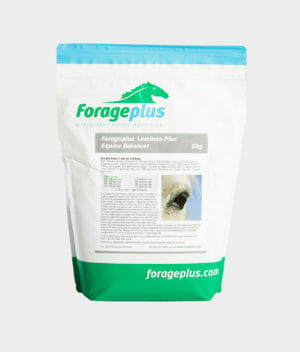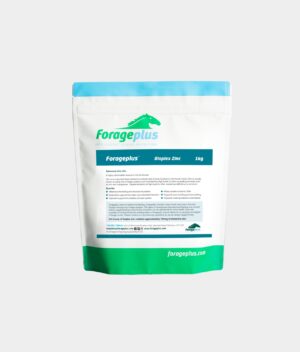N0 horse laminitis is the goal of each ECIR Group conference. The ECIR Group lead the way in horse laminitis study through disseminating information that can help metabolic and endocrinopathic horses.
ECIR is committed to providing high-quality information to achieve no horse laminitis, with scientific backing and real-life experience.
Useful Facts about IR (insulin resistance) and PPID (Cushings)
- Insulin resistance (IR) in the horse presents as elevated circulating levels of insulin caused by over exposure to high levels of simple sugars and starch, poor nutrient exposure, pregnancy, and other disease states. The horse experiences a loss of sensitivity to insulin at a cellular level. This may be a genetic tendency or induced by the high cortisol in PPID and other diseases.
- IR is estimated to involve around 10-15% of the equine population.
- PPID (Cushings Disease) refers to a condition characterised by excess production of the hormone cortisol as a result of a tumour in the pituitary gland of the brain, which produces high levels of the hormone ACTH. The ACTH causes high cortisol release from the adrenals.
- Nearly 90% of laminitis is caused by endocrine (metabolic/hormonal) disease
- Laminitis strikes across all breeds, ages and sizes of horses.
- Over 20% of equines 15 years and over have PPID
- Excessive hair coat is not the first sign of PPID
- The most common early sign of laminitis is foot sensitivity/laminitis
- Not all obese horses will develop laminitis
- Not all horses should or need to be fed as if they are insulin resisitant
- Insulin resistance can be driven by inappropriate diet but also by unrecognised disease states such as PPID
- Insulin resistance in horses is not the same as diabetes in people.
- Most horses with insulin resistance have normal glucose levels.
- Fructan in grass is not the problem. There are not enough fructans in grass to produce laminitis. For horses to take in enough fructan you would have to have a hay with a 30% fructan content and this is not seen in the UK.
- The type of fructan used to induce laminitis experimentally, from chicory root, is not the same as the types of fructan found in grasses.
- Grass type fructan has never been proven to induce laminitis. Crawford, et al, 2007, found that feeding fructan at levels similar to that found in most grasses did not cause laminitis.
- A 450 kg horse would have to ingest a total intake of 37.5 percent of his diet in fructans in order to induce hind gut laminitis.
- High levels of simple sugar and starch digested in the stomach lead to insulin spikes in the IR horse.
- Research has shown that prolonged high insulin causes unique lamellar lesions. (Nourian, et al, 2009)
- The ECIR Group recognised simple sugar and starch as the primary culprit in elevated insulin and subsequent laminitis in 2002.
- Grass can contain high and fluctuating levels of carbohydrates (simple sugar and starch) so horses which have elevated insulin are at risk from this prolonged and fluctuating exposure causing laminitis.
- Most laminitis does not involve the hind gut, acidosis or leaky gut syndrome.
- High levels of insulin can cause sub-clinical laminitis which presents as foot soreness and is often diagnosed as other lameness’s.
- The ECIR Group discovered that rinsing and soaking hay reduced simple sugars for the benefit of IR horses in 2002.
- Exercise, tightly controlled carbohydrate ingestion and a mineral supplement balanced to forage analysis are the best ways of controlling IR.
- PPID does not mean the end of your horses useful life, carefully controlled with the correct medication and diet your horse may have many, many more years of ridden and happy life.
- Some horses exhibit high cortisol response to a seasonal rise (usually in autumn) without a full PPID diagnosis throughout the year.
- Exaggerated seasonal rise can lead to laminitis in autumn.
- Development of allergies and hypersensitivities to vaccines and flies is one of the symptoms of PPID. Sometimes subtle muscle loss across the top line is also a subtle sign.
- The seasonal rise was first documented by a dedicated ECIR member in 2004. Seasonal rise was then confirmed in 2005. (Donaldson, et al.)

Signs and Symptoms of PPID
- The most distinctive sign of PPID is a long hair coat which does not shed out in spring. However this usually occurs when the disease has become more advanced.
- The first symptom is often unexplained autumn laminitis.
- Other signs may include – enlarged mammary glands, subtle loss of top line, milk production in unbred mares, increased thirst/urination, loss of condition and muscle wasting.
- Lethargy
- Weight loss
- Muscle loss
- Excessive sweating (hyperhidrosis) or failure to sweat (anhidrosis)
- Skin darkening, often with thickening and scaling
- Increased susceptibility to infections
- Poor resistance to internal parasites
- Development of allergies and hyper sensitivities (e.g. vaccinations, flies)
- Infertility
Signs and Symptoms of IR
- Easy weight gain.
- Abnormal fat deposits such as a cresty neck or lumpy patches which persist even if the horse loses weight, fatty sheath.
- Puffiness in the hollows above the eyes.
- History of laminitis or foot sensitivity – commonly induced by grass.
- Advanced symptoms include increased thirst and urination, loss of body condition and muscle wasting and low energy levels.
- Above normal insulin with normal blood glucose.
Diagnosing these conditions correctly
The fact that the signs and symptoms of these two conditions often overlap means that correct diagnosis is extremely important because they are treated differently.
The best way of diagnosing PPID is by a single blood draw to measure the level of endogenous ACTH ( adrenocorticotrophic hormone). The sample however must be handled correctly so that it does not lead to a false negative. The sample should be put in a purple topped vial, placed on ice while it is taken straight back to the vet’s practice and then centrifuged and frozen. It should be then shipped frozen as soon as possible to the lab. In the UK Liphook is the best lab to use. Make sure your vet knows exactly how to handle and ship the sample so you do not end up with an unreliable result. If your vet suggests using the Dexamethasone Suppression test which measures cortisol response, decline it as it may pose a risk of precipitating or exacerbating laminitis.
The best way of diagnosing IR is by obtaining non-fasting glucose, insulin and leptin level from the same blood draw. Note that many vets insist on fasting your horse before this blood draw but this can lead to a false result. Horses should not have fasted before this testing (this is only done for human tests)! If a horse is “meal fed”, which basically means there are periods in excess of 6 hours when the horse has nothing to eat, the first meal after the fast will generate a larger insulin spike than subsequent closer together feedings even if the meal is exactly the same. To avoid a false-positive result, the horse should have hay or pasture available at all times the night before and day of the testing. If that’s not possible, make sure the blood is drawn at least 4 hours after the first meal of the day and feed at 4-hour intervals or keep some hay in front of the horse until the testing is done. The horse should not be fed any hard feed prior to testing. The horse also should not be exercised within 4 hours of the test and avoid travelling before testing as well. Stress and exercise influence glucose, insulin and leptin dynamics.
Currently, the only place offering leptin testing is Cornell University and Animal Health Diagnostic Laboratory in the U.S.A. but perhaps in the near future Liphook in the UK might start offering this test which is important due to the fact that raised leptin can be abnormal with normal insulin, so where a test comes back as within normal ranges for insulin and glucose, leptin levels can indicate early problems. Leptin is the hormone that signals fullness when eating. Horses can become leptin resistant meaning that high levels of leptin are produced in an effort to control overeating. Think of leptin as the ‘stop eating stupid hormone’! A low sugar and starch diet can influence insulin results. Testing leptin will help avoid a false negative in these cases.
Some important facts to remember:
- Most Insulin Resistant horses do not have an elevated blood glucose. Horses seem to be very good at controlling glucose levels. However it can be helpful to test glucose to make sure the horse has not reached the diabetic range.
- A horse can be insulin resistant and still have an insulin level that is within the lab’s normal range. This is where using RISQI can help you determine whether your horse has compensated IR.
What to do once you get a copy of your blood report
G:I ratio
Based on human studies and data from the ECIR Group member’s horses, the G:I ratio can be useful to diagnose your horse. You simply use the glucose and insulin results on the report. Divide the glucose result in mg/dL by insulin in uIU/mL. (If your insulin is reported in pmol/L you have to convert it to uIU/mL by dividing by 7.1.). A value below 4.5 is considered positive for IR and a high risk of laminitis. Values between 4.5 and 10 represent compensated insulin resistance which means less risk of laminitis but it is wise to keep tight control of diet and weight.
RISQI
The RISQI is a proxy developed by researchers at Virginia Polytechnic Institute. RISQI stands for “reciprocal of the square root of insulin”. It is calculated by the equation 1/square root of insulin. A RISQI value of less than 0.2 is considered positive for IR and the horse is at high risk of laminitis. RISQI 0.2 to 0.32 = compensated insulin resistance and a lower risk of laminitis but again it is wise to keep tight control of both diet and weight.
MIRG
Horses that have elevated blood glucose, or abnormally low insulin responses, may have RISQI and G:I results that are normal because they have actually crossed the line from insulin resistance to actual diabetes. This is where calculating the MIRG value becomes extremely important.
MIRG = modified insulin:glucose ratio. It is calculated by: [800 0.3 x (insulin 50)2] /(glucose 30)]. If G:I ratio or RISQI are positive, there is no need to do this calculation, but if the horse has symptoms of IR and those equations are normal, you should check the MIRG, especially if blood glucose is elevated. A MIRG result greater than 5.6 means the horse is IR and at risk of laminitis.
The Online IR Calculator
Here you can find a very useful IR Calculator which is a tool designed to calculate the above G: I Ratio, RISQI and MIRG without you having to worry about knowing the maths.
We have more interesting articles on laminitis prone horses here.







